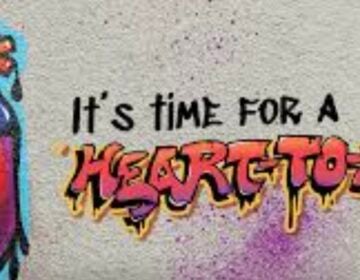Understanding physiognomy and legacy of a physician photographer
Last year’s introduction of a fifth iteration of the Diagnostic and Statistical Manual of Mental Disorders, often called the “bible for psychiatrists,” was a magnet for controversy and heated discussion.
Even after publication, experts continue to debate symptoms, categories and classifications. In other words, the world of mental health reflects the difficulty and evolution inherent in examining and understanding the functions of the body’s most complex organ.
Diagnosis and categorization of different disorders have always been challenges in this field. In the early days of psychiatry, a century and a half ago, there was a belief that facial features could be used to identify mental health problems. This was also a time when it was acceptable for doctors to incorporate their patients into amateur art projects.
Sharrona Pearl, assistant professor at the Annenberg School for Communication at the University of Pennsylvania, is giving a talk tonight on one of the more peculiar characters from this now peculiar-seeming time, Dr. Hugh Welch Diamond.
As director of the Wakefield County Asylum in the 1860s, Diamond is remembered as a pioneer in bringing photographic documentation to the field of medicine.
“What was interesting to me is the way he applied those innovations in the photographic realm to the medical realm,” said Pearl.
But Diamond went further than simply using photographs to document and catalogue patients.
“He really was the first doctor to think about using photography for the purposes of diagnosing patients,” said Pearl. “He was an ardent believer in the practice called physiognomy, which is the study of facial features and their relationship to character … This practice believed that you could tell things about people’s behavior, character, internal self by looking at them.”
Diamond was in good company; physiognomy was in vogue in Victorian England, where people were searching for new ways to explain the rapidly industrializing society around them. It could be claimed that a seemingly unstoppable explosion in crime was being studied and addressed through the “scientific” understanding that people with beady eyes and thin lips were predisposed to crime.
Diamond believed that his photos were key to improving diagnosis and treatment in asylums, already the subject of early reform talk for their inhumane conditions. And his attention to the self-grooming habits and clothing selection depicted in the photographs of patients went a step beyond physiognomy, into a realm close to actual logic.
But the doctor was also engaged in some, let’s say, less scientific interests. His photos, which survive today, are often hauntingly composed, in a way that Pearl says is not accidental or part of an “Instagram effect” imparted by early film stock’s rich textures.
“He writes at depth about the role that photography can play in providing an accurate likeness, as opposed to say drawing, and credits the technology of photography in allowing him to do what he does because of its accuracy,” said Pearl. “But he also has all these props in his photos … [one] woman has this kind of a garland on her head, almost a crown made of leaves, and that’s a clear reference to Ophelia, it’s a clear reference to female madness. It’s not accidental that it’s there.”
Diamond, it turns out, was something of a repressed artist. Many of the subjects in his photography, often impoverished women, are staged with shawls, a symbol at the time of poverty. He asked patients to strike unusual poses, looking skyward or off into the distance, for instance, that were beyond the demands of clinical documentation.
And he certainly didn’t intend on keeping the photos to himself.
“Diamond, in addition to being this very active doctor and diagnostic photographer, displayed his photographs in exhibitions,” said Pearl. “He was interested in creating a personal internal narrative and set of symbols.”
Today, Diamond seems like a flawed character, who couldn’t decide if he wanted to be a doctor or an artist and compromised himself (and his patients) by trying to be both.
But in the 19th century, he was seen almost as the purest sort of artist, because making art wasn’t his primary source of income. He was doing it purely for creativity’s sake.
Physiognomy would die out as a “scientific” practice, but the doctor would remain respected for his philosophy that therapy, instead of corporal punishment, could be used to treat mental health disorders.
Later, mental health professionals utilized Diamond’s photographic work — one of the world’s first mental health manuals, sort of a prototype for the DSM, featured diagnostic photos on its cover.
But Pearl doesn’t think the doctor was using photos simply as a means of advancing either his artistic or scientific career. “A lot of what we see is the return to this idea of giving dignity to the mentally ill,” she said.
WHYY is your source for fact-based, in-depth journalism and information. As a nonprofit organization, we rely on financial support from readers like you. Please give today.




